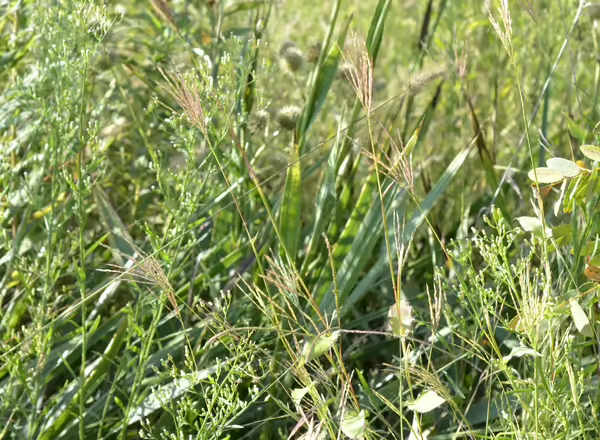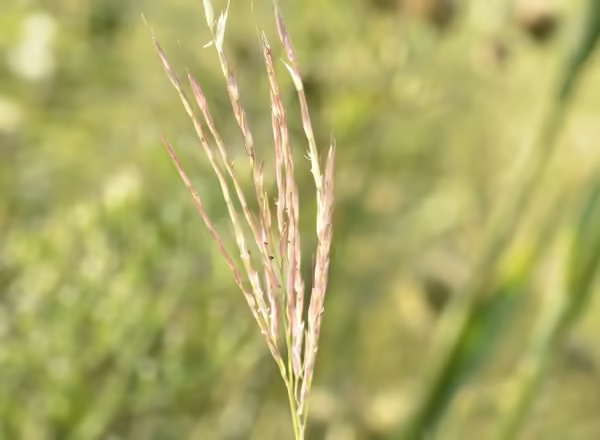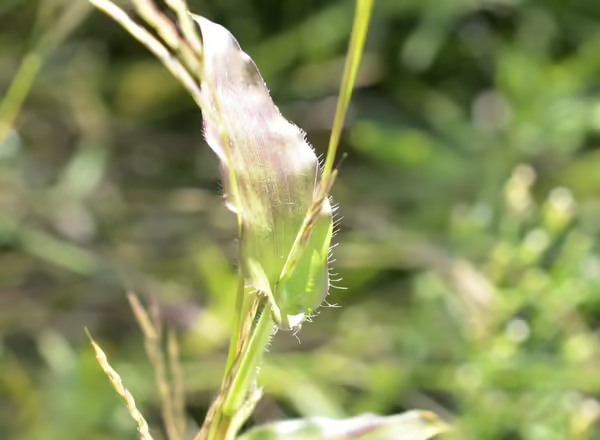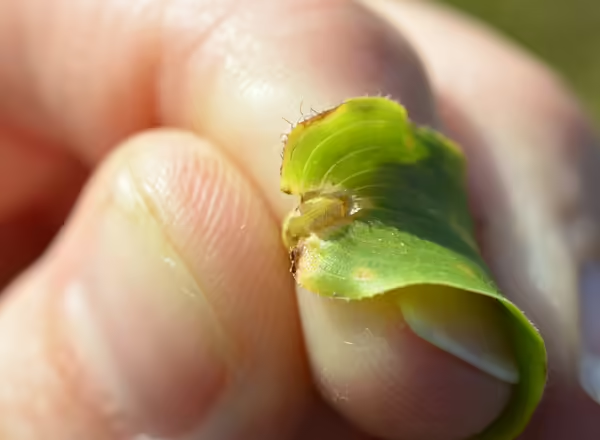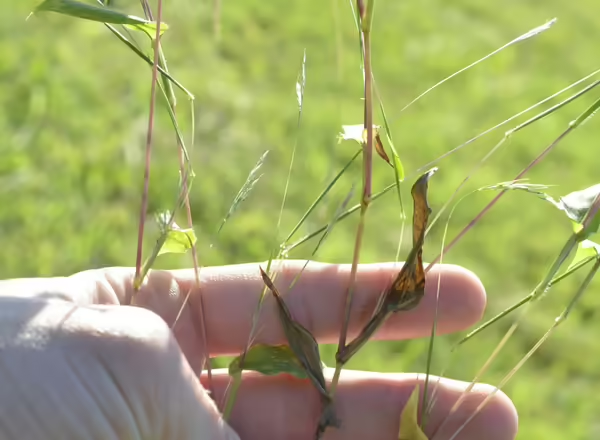A lesser known invasive grass
We’re not sure how Small Carpetgrass, Arthraxon hispidus, made its way from Asia to the United States, but it was likely introduced accidentally. Since the early 1900’s it has spread through the eastern U.S., preferring wetter habitats with running water that can help its seeds disperse. According to EDDMapS, there are only a handful of reports of this grass in Illinois. However, it is found in 26 other states in the U.S., mostly in the eastern part of the country. There’s a good chance it’s underreported, so let’s take a look at how to identify this grass.
Identification Characteristics
Small Carpetgrass is an annual grass with weak stems that flowers in late summer. It forms dense mats due to its creeping nature, with the lower nodes of the stems rooting and furthering its spread. It is short in size, usually under 2 feet tall.
The leaves of this grass are quite broad for its size, about ¼ to ½ inch broad, and they taper to a point at their tips while their broad bases wrap around, or clasp, the stems. You can find short hairs all along the edges of the leaf blades and sheaths. It has a short membranous ligule.
The flowering structure of Small Carpetgrass is a finger-like collection of spikelets, or a raceme. It has a turkey-foot shaped seedhead like Big Bluestem, but on a much smaller scale. The spikelets have short awns.
Management
What should you do if you find this grass? If you find a small patch, work to eradicate it before it can really establish and spread. Make sure to report your finding - EDDMAPs is a great tool to report records of invasive species.
If you have a small enough patch, you can hand pull the plants. If you have a larger area to treat, look for a grass specific herbicide. Always read and follow herbicide label instructions.
Need a refresher on grass identification terms, like ligule and spikelet? Check out this blog post!
